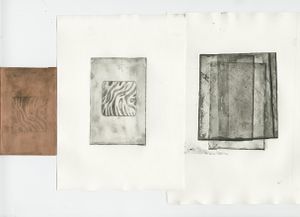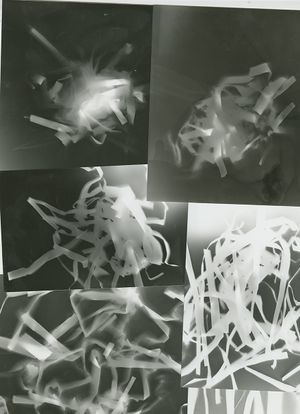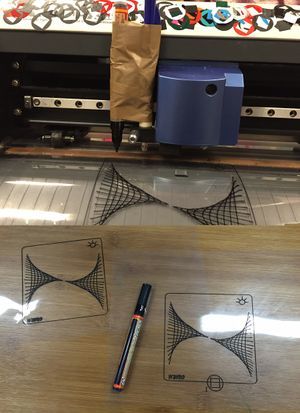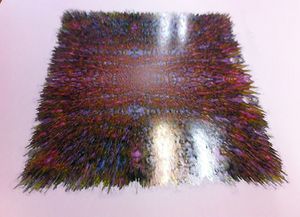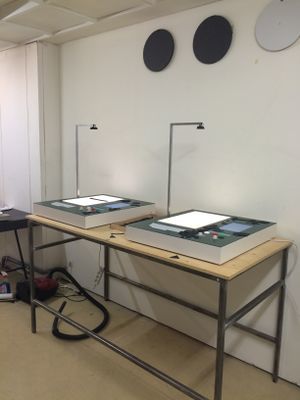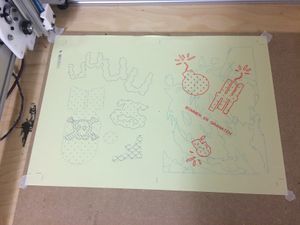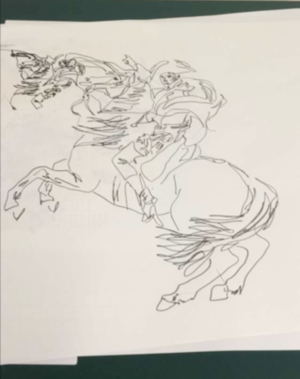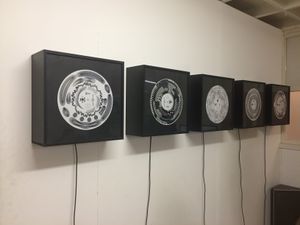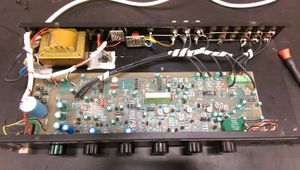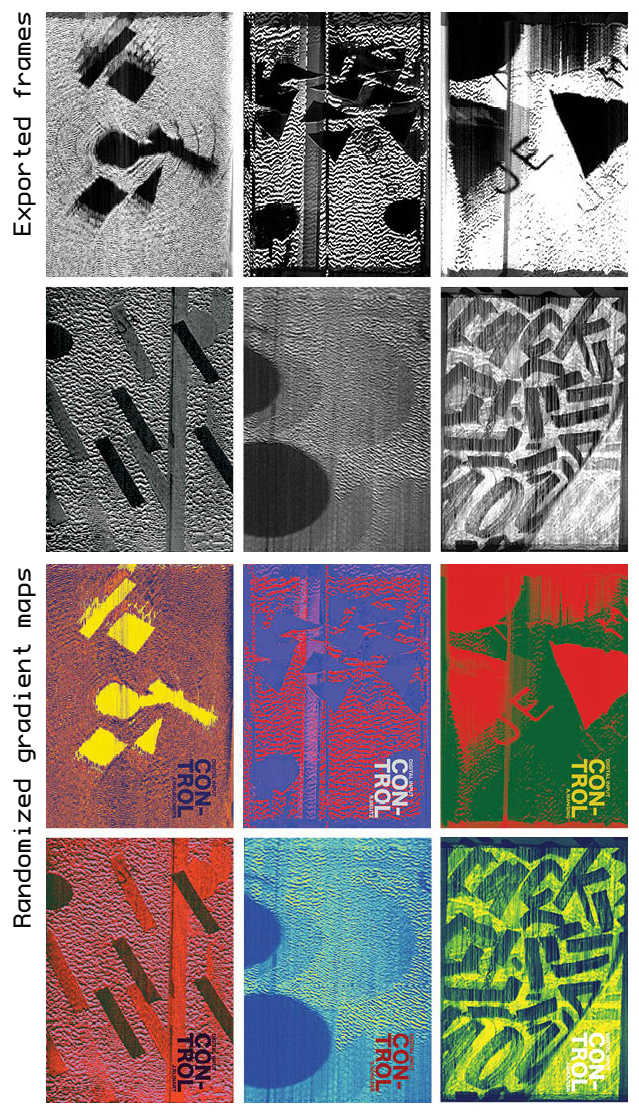User:JeroenRijnart
Jeroen Rijnart; 0873511@hr.nl
This wiki is a work in progress
Contents
Why I am a maker (first draft):
I like the idea that something I imagined can take physical or visual form.
I like the idea of creating something and sending it off into the world, reaching someone, somewhere sometime, without me knowing who. To let it up to the user/viewer what to think of it or what to do with it.
I like the idea that something that sprung from my imagination can influence someone else's imagination, especially in this day and age where the other person can be in a different corner of the world.
- Losing/gaining control
- making something with/for someone else, community
- instruct-able, video, ask someone to make something based on my instruction
- chain reaction
Historical example: Etching
The technique
Etching is traditionally the process of using strong acid or mordant to cut into the unprotected parts of a metal surface to create a design in intaglio (incised) in the metal.[1] In modern manufacturing, other chemicals may be used on other types of material. As a method of printmaking, it is, along with engraving, the most important technique for old master prints, and remains in wide use today. In a number of modern variants such as microfabrication etching and photochemical milling it is a crucial technique in much modern technology, including circuit boards.
What I did
It turns out I'm not really good at drawing in copper. Although I like the textures you get from this printing technique, so I printed the backside of my plate a couple of times over.
Comparative example: Riso v Xerox
A new skill: Photograms as a reproduction technique
The technique
A photogram is a photographic image made without a camera by placing objects directly onto the surface of a light-sensitive material such as photographic paper and then exposing it to light. The usual result is a negative shadow image that shows variations in tone that depends upon the transparency of the objects used. Areas of the paper that have received no light appear white; those exposed through transparent or semi-transparent objects appear grey. In a darkroom, or a darkened room, objects are arranged on top a piece of photographic material, usually photographic paper. When the operator is satisfied with the arrangement, the photographic material is exposed with light, usually by switching on an enlarger or other artificial light source. The material is then processed, washed and dried.
What I did
The first photograms I made where made with cut up paper, the images produced were chaotic and expressive, it was almost impossible to make the same image twice. After that I made a stencil using transparent paper, an acrylic paint marker and a plotter so I could transfer my design to light sensitive paper. Using the lights provided in the dark room resulted in a very clean print, so I started to use a lighter to expose the paper for a more blurry effect.
Pushing a technique to the limit: Wet printing
For lack of a better term I will ,for now, call this technique wet printing. I once found out, through no fault of my own, that when you load up lustre paper the wrong way around the ink will still be wet when your paper comes out of the printer. The paper will in fact slowly absorb the ink as it dries and transform the image. The drying will take several months and as a result the image will slowly change. The image I printed was something I once made using processing, I was curious to see what would happen to it.
Indianen workshop
The Indianen workshop was really cool, the longhand printer which was supposed to impose restrictions upon the user still gave a lot of room for experimentation. The Evil Eye project is also really cool. Paper records which you can only play with the Evil Eye optic laser is a really nice idea on its own, but the fact that you can position the laser yourself to play the part you want to play makes it extra fun.
(digital_input) CONTROL: Making posters with video feedback
I wanted to build my own system for creative experimentation and esthetically pleasing end results, so I made an installation that consisted of a video feedback loop and a videoprocessor I once modified. I hooked it up to a computer and made other students make designs on translucent paper with stickers of geometric shapes and letters. The translucent paper was to be held between the camera and tv-screen in the feedback loop so it would be distorted by the videoprocessor, all the while the footage was being digitized and recorded onto a computer in Adobe premiere. I would then export a frame from the recorded footage and load it into Photoshop where I would apply a random gradient map. The idea was that the translucent paper would be taped to the screen but the first student already started experimenting with folding and moving his design in front of the camera, the last student to participate used a marker instead of the stickers I gave him to make his design. The result is a series of abstract posters. I named the project (digital_input) CONTROL.
